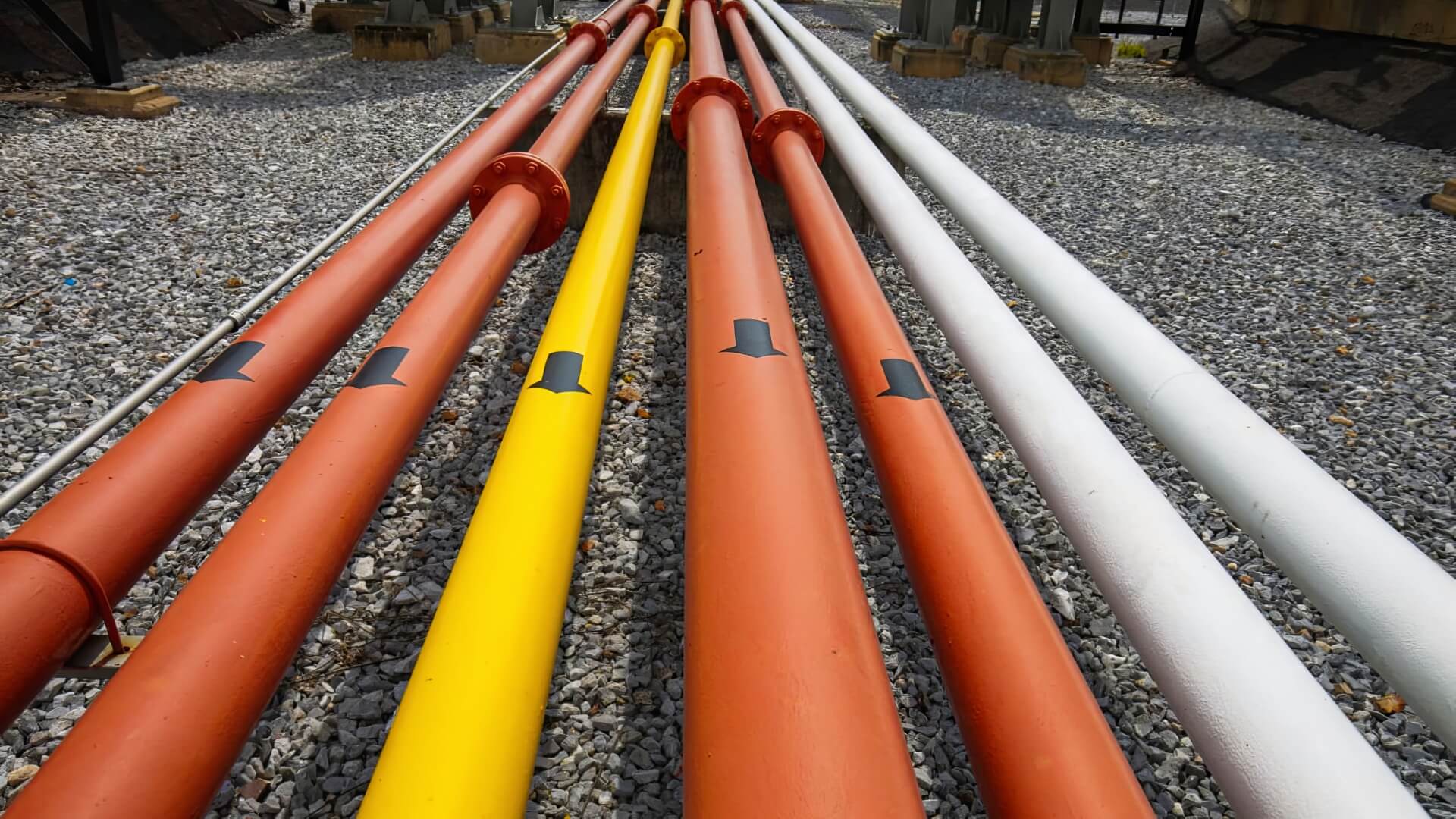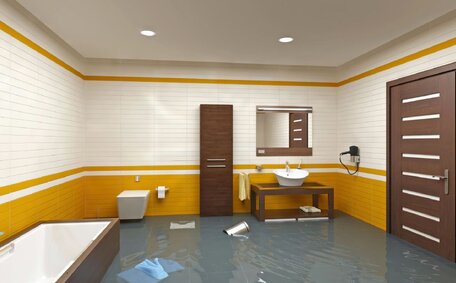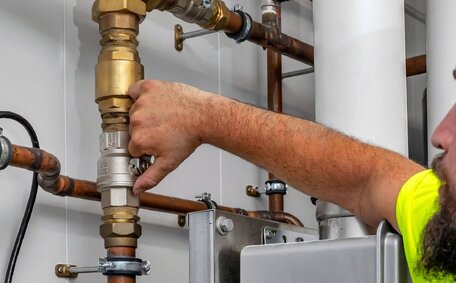Introduction to foul smells in bathrooms
Foul odours coming from bathroom drains are a common annoyance that no homeowner wants to deal with.
A smelly bathroom often stems from blocked or clogged drains, which allow organic matter to accumulate and bacteria to thrive, producing noxious gases. Left unchecked, a stinky bathroom can also become a health hazard by allowing potentially toxic sewer gases to enter your home.
Some of the most common culprits for bad bathroom smells include accumulated hair and soap scum, mould and mildew growth, cracked or deteriorating pipes, and invasive tree roots that block drains. Food particles from the kitchen can also get washed down the bathroom sink or tub and cause nasty odours over time.
While mild drain-related odours can often be remedied with DIY solutions, a persistently smelly bathroom that affects multiple fixtures may indicate a larger issue, like a main sewer line blockage. In those cases, calling a professional plumber is recommended.
This guide covers easy ways to get rid of bad bathroom smells on your own, when to call for backup, and how preventive maintenance can help you avoid stinky situations in the future.
Common causes of foul bathroom odors
There are a few common culprits that can cause foul odours in your bathroom:
Tree Roots
Invasive tree roots are one of the top reasons for smelly drains in bathrooms. As roots grow, they can find their way into cracks and joints in sewer pipes. The roots block drainage, allowing waste to accumulate and bacteria to multiply, producing unpleasant odours.
Deteriorating Pipes
Old, corroded cast iron or galvanised steel drain pipes can begin to crack and rot from the inside. Gaps and holes in your drain pipes allow sewer gases to vent into your home and can cause nasty smells.
Sink and Shower Buildup
When fats, oils, hair, and soap residue accumulate over time, they coat the insides of pipes. This organic matter provides food for bacteria that release sulphurous gas as they digest the grime.
Disconnected or Cracked P-Trap
P-traps are the u-shaped pipes under sinks and tubs that hold water to block sewer gas from entering living spaces. If these become disconnected or cracked, it opens a pathway for foul odours to infiltrate your bathroom.
Blocked drains
Blocked or clogged drains are one of the most common causes of foul odours in bathrooms. When drains get blocked, water and waste get trapped, creating a prime environment for bacteria to multiply.
Food particles, grease, soap scum, and other organic materials often stick to the sides of drain pipes. Over time, this builds up and narrows the pipe openings, eventually blocking the flow entirely. Stagnant water mixed with accumulated grime creates ideal conditions for anaerobic bacteria to thrive and release foul-smelling hydrogen sulphide gas.
Partial obstructions can also limit airflow through drain pipes and cause bad odours. Even small blockages make it easier for anaerobic bacteria to take over, outnumbering healthy aerobic bacteria.
Preventing clogged drains is key to avoiding bad bathroom odours. Don’t wash fats or oils down the sink. Avoid using abrasive drain cleaners which can damage pipes.
Use drain covers to catch hair and debris before it goes down the drain. And consider periodic professional drain cleaning to keep your pipes smelling fresh.
Damaged wax ring seals
Wax ring seals play an important role in securing your toilet to the floor and preventing sewer gases and odours from escaping. However, these seals can become damaged over time.
As the wax seal ages, it can crack, dry out or become displaced. This allows foul-smelling sewer gases to leak from the drain opening and vent into the bathroom. A loose, unsecured toilet can also break the watertight seal formed by the wax ring.
Replacing a degraded wax seal is a relatively easy DIY project that can resolve sewer odours coming from the toilet area. Just turn off the water supply, unbolt the toilet, remove the old wax ring and clean the area thoroughly before installing a new one.
It’s important to get a tight uniform seal all around the drain opening.
A damaged wax ring should be replaced as soon as any odours are noticed since the leaking sewer gases pose a health hazard. Regularly inspecting and maintaining this seal can prevent foul smells and leaks around the base of your toilet.
Sewer gas leaks
p>p>p>p>p>p>p>p>p>p>p>p>p>
Mold and mildew
Mould and mildew growth in bathroom pipes and damp areas can also cause unpleasant smells. The moist, humid environment of bathrooms provides ideal conditions for mould to thrive. Mould emits a musty, earthy odour as it breaks down organic matter.
Inhaling mould spores can be hazardous to your respiratory health. Mould exposure has been linked to allergic reactions and asthma flare-ups. Extensive mould on surfaces may indicate there is a moisture issue that needs to be addressed.
Using mould killing cleaners, improving bathroom ventilation, and fixing any water leaks can help eliminate mould odours. Bleach is effective at removing surface mould but doesn’t kill mould roots within porous materials. Professional mould remediation may be required in severe cases.
Regularly cleaning and disinfecting bathroom surfaces goes a long way towards preventing mould and mildew from taking hold and spreading foul odours.
Why pipe relining can resolve foul smells
Pipe relining is an effective solution for eliminating foul odours originating from bathroom drains. This trenchless method involves coating the inside of damaged drain pipes with an epoxy resin to seal cracks, gaps, and blockages.
By repairing pipe damage and creating a smooth interior surface, pipe relining stops smelly sewer gases from escaping into your home. It also removes any obstructions and buildup where smelly bacteria can grow.
Unlike traditional pipe replacement, relining avoids tearing up floors and walls to access pipes. The flexible epoxy resin lining is inserted through your drain opening and hardened using hot water or steam pressure. This seals the pipe without destroying your existing tile or fixtures.
Pipe relining can resolve odours caused by root invasion, cracked pipes, buildup, and sewer vent issues. It restores free drainage and airflow so water and waste don’t stagnate. Relining prevents future obstructions and leak points as well.
Compared to constantly using drain cleaners or masking odours with fragrances, fixing the root cause through pipe relining provides a permanent, long-term solution to foul bathroom smells.
How pipe relining works
p>p>p>p>p>p>
Benefits of trenchless pipe relining
Trenchless pipe relining offers numerous benefits compared to traditional pipe replacement methods:
Minimal Invasion
Pipe relining is a non-invasive solution, requiring no digging or destruction. Access is through existing drains, so walls, floors, landscaping and fixtures stay intact.
Speed
Relining is completed in just one day with no wait for materials. Your plumbing system is fully operational once the epoxy has cured.
Cost Savings
Without the need for excavation equipment or land restoration, pipe relining costs significantly less than replacement. It also qualifies for some rebates.
Longevity
The seamless epoxy lining can last 50+ years since there are no joints or seams vulnerable to root intrusion or deterioration.
Environmentally Friendly
Relining has a minimal carbon footprint, producing almost no waste materials or need for new pipe resources.
Versatility
Pipe relining works on a wide range of pipe materials and sizes. It’s effective for both lateral pipes and main sewer lines.
No Odours
By sealing cracks and obstructions, pipe relining stops sewer gas leaks that cause foul bathroom odours.
Pipe relining vs traditional replacement
Pipe relining has become an attractive alternative to fully replacing old, damaged plumbing pipes. Here’s how the two methods compare:
Pipe Relining
- Trenchless method that coats the inside of pipes with epoxy resin to seal damage, leaks and blockages.
- Minimal destruction to property since access is through existing drains.
- Much faster process completed in one day.
- More affordable, saving on excavation, restoration and labour costs.
- Long-lasting solution that can extend the pipe lifespan by decades.
- Causes minimal disruption to household or business.
Full Replacement
- Involves digging trenches to access and remove old pipe sections.
- Much more invasive, destroying floors, walls, fixtures, and landscaping.
- Multi-day process, including wait for new pipe materials.
- Far more expensive due to excavation, new pipe and restoration work.
- Repairs only as strong as the new materials used.
- Causes major disturbance as sections of home or yard are dug up.
For most situations, pipe relining provides a less destructive, faster, more affordable fix that prevents future drainage issues and odours.
When to call a professional plumber
As a homeowner, there are some clear signs that the services of a professional plumber are needed to address foul bathroom odours:
- Persistent, intense sewer gas smells coming from multiple drains, fixtures, or toilets throughout your home. This indicates a larger main sewer line issue that requires expertise.
- Locating the exact source or cause of the odour is difficult. A pro can use special tools to diagnose problems.
- DIY drain cleaning solutions and odour removers provide only temporary relief. The smell keeps returning.
- You have very old, corroded or damaged pipes. These require replacement a plumber can provide.
- The foul smell is accompanied by sewage backups, leaks, flooding, or burst pipes. These require emergency plumbing services.
- Your drain clogs repeatedly despite efforts to clear them. A deeper blockage or sewer line problem may exist.
- There are signs of mould growth around drains or wet areas, posing health risks.
- Your home plumbing system hasn’t been inspected or serviced in over a year. Preventative maintenance can help avoid smelly drain issues.
Trust an experienced plumber for effective diagnosis and solutions if DIY remedies fail. They have the expertise to tackle troublesome odours at their root cause and prevent hazardous sewer gases from entering your living space.
Signs you need drain repairs
p>p>p>p>p>p>
Health hazards of sewer gases
Inhaling sewer gases can pose a number of health risks that should not be taken lightly. The primary dangers stem from hydrogen sulphide, methane, ammonia and other toxic compounds present in the gas emitted from waste materials.
Hydrogen sulphide is a colourless gas that smells like rotten eggs, even at low concentrations. Exposure to high levels can cause nausea, headaches, coughing and breathing difficulties. At very high concentrations, hydrogen sulphide can cause respiratory paralysis and death.
Methane is an odourless, flammable gas that displaces oxygen when concentrated in an enclosed space. Lack of oxygen can lead to asphyxiation. Methane is also an asphyxiant and may cause symptoms like headache, dizziness, weakness, nausea, vomiting, loss of coordination and judgement.
Ammonia has a strong, pungent odour and can irritate eyes, skin and respiratory tract. Exposure to high levels can cause breathing difficulties that may be fatal. Other potential effects include chest pain, pulmonary edoema and persistent coughing or wheezing.
Sewer gases contain many pathogens, including bacteria, viruses, parasites and fungi. These can cause serious gastrointestinal problems and infectious diseases if inhaled or exposed to open wounds. Diseases associated with sewer gases include typhoid, hepatitis A and giardiasis.
Repeated exposure to sewer gases over time, even at low concentrations, can potentially lead to chronic health effects. Strict precautions should be taken to eliminate any sources of sewer gas leaks in the home. Prompt professional repair of damaged pipes or faulty plumbing is strongly recommended.
Conclusion
Foul odours coming from your bathroom drains should never be ignored as they often indicate blocked pipes, sewer gas leaks or unhealthy mould growth. While DIY solutions can temporarily relieve mild smells, persistent bad odours likely point to larger drainage issues that require a professional plumber’s skills.
Smelly drains not only create an unpleasant environment, but also allow hazardous sewer gases to enter living spaces and impact health. By utilising modern trenchless pipe relining, plumbers can comprehensively eliminate odours and blockages without destroying your home. Compared to short-term fixes, proactive drain maintenance prevents future problems.
Don’t let foul bathroom odours ruin your home life or health.
An experienced plumber has the methods and expertise to diagnose the true source of any bad drain smells and rectify it for the long-term. Investing in professional plumbing services delivers invaluable peace of mind that your family and living space are safe from the hazards of sewer gas leaks and blockages.






